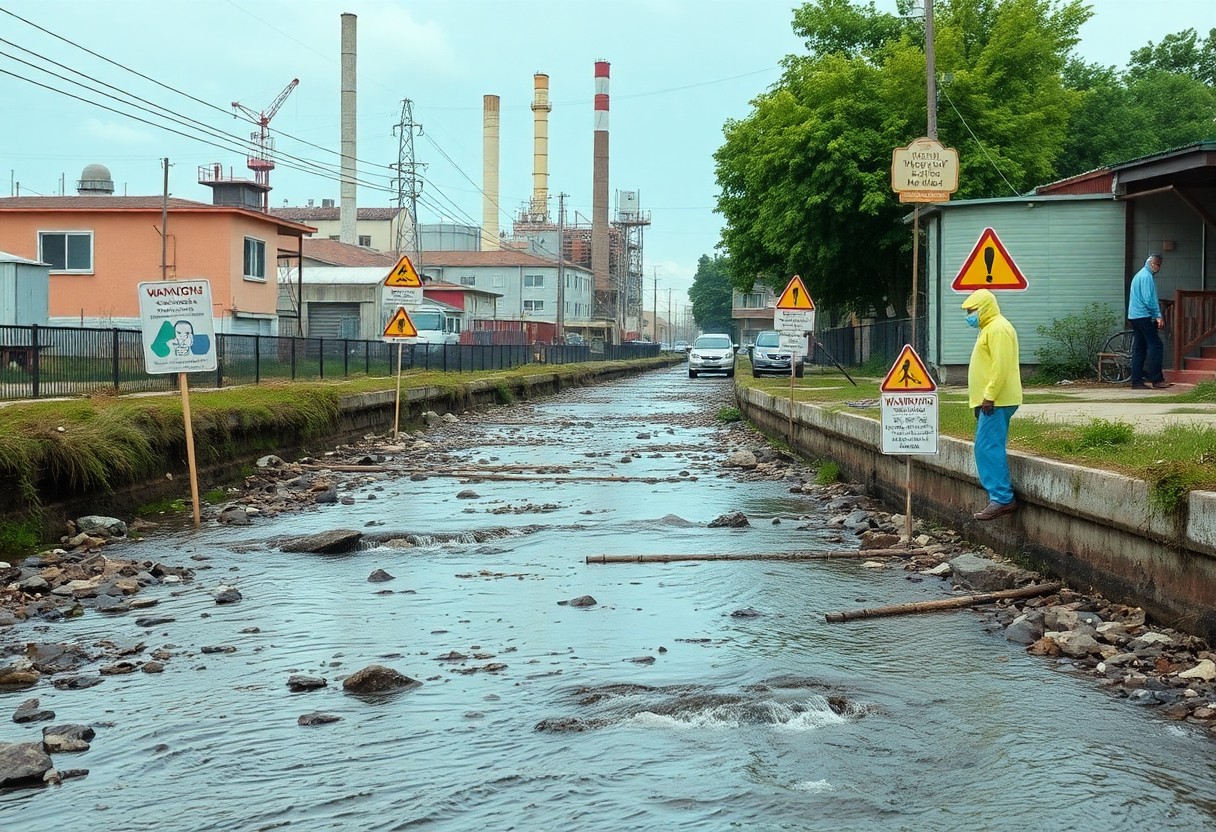Most people are unaware of the high risks associated with PFAS, or per- and polyfluoroalkyl substances, commonly found in everyday items like non-stick cookware and water-resistant clothing. These man-made chemicals are notorious for their ability to persist in the environment and accumulate in your body, leading to potential health concerns. Understanding the chemical properties and widespread use of PFAS is imperative for grasping why they are often called “forever chemicals.” This blog post will explore into the science that explains why these substances are so challenging to eliminate from your surroundings.
Understanding PFAS
Before stepping into the complexities of PFAS, it’s necessary to grasp what these chemicals are and why they elicit concern. PFAS, or per- and polyfluoroalkyl substances, have unique properties that make them resistant to heat, water, and oil, leading to widespread use in various consumer products. However, their persistence in the environment and human body raises significant health and ecological challenges.
Definition and Chemical Structure
Definition: PFAS are a group of synthetic chemicals characterized by a carbon-fluorine bond, which is one of the strongest bonds in organic chemistry. This bond contributes to their persistence in the environment and human body. Commonly found in various applications, these compounds can take years or even decades to degrade, posing long-term health risks.
Historical Use and Applications
Before their widespread recognition as environmental contaminants, PFAS were celebrated for their non-stick, water-resistant, and fire-retardant properties, leading to their incorporation in many products.
Also, PFAS have been used in countless applications, from food packaging to stain-resistant textiles and firefighting foams. Their ability to repel water and oil made them popular in the manufacturing industry. However, this widespread use has resulted in persistent pollution, causing alarming health issues such as cancer, liver damage, and hormone disruption, raising growing concerns about their long-term impact on your health and the environment.

Environmental Persistence
Clearly, PFAS (per- and polyfluoroalkyl substances) are notorious for their environmental persistence, meaning they do not break down easily in nature. This characteristic poses significant challenges for pollution management and clean-up efforts. These chemicals can remain in soil and water for decades, contaminating resources you may rely on for drinking water and agriculture.
Mechanisms of Persistence
Any chemical that is resistant to degradation is inherently problematic, and PFAS exemplify this. They contain carbon-fluorine bonds, one of the strongest bonds in organic chemistry, making them exceptionally stable in various environmental conditions. As a result, they tend to accumulate rather than decompose, entering your ecosystem through various pathways like industrial runoff and wastewater discharge.
Impact on Ecosystems
Against the backdrop of environmental health, PFAS have severe implications for ecosystems. These chemicals can disrupt the balance of flora and fauna by accumulating in aquatic and terrestrial organisms, affecting your local biodiversity. The persistence of PFAS in the environment can lead to bioaccumulation in animals, ultimately entering the food chain and posing hazards to your health as well as to wildlife.
Ecosystems around you suffer greatly from the lasting presence of PFAS. The bioaccumulation of these chemicals can trigger toxic effects in various species, leading to declines in populations and altering habitat integrity. Fish contaminated with PFAS can pose health risks for humans consuming them, while plants may exhibit inhibited growth and reproduction, further disrupting ecological balance. The lasting toxicity of PFAS illustrates a significant environmental challenge you may face, with implications reaching far beyond immediate contamination.
Health Implications
If you’re exposed to PFAS, you may face a range of health issues, including effects on your immune system, hormone regulation, and potential development of certain cancers. Research indicates that these chemicals can accumulate in your bloodstream over time, leading to serious health challenges that may persist for years. Understanding the health implications of PFAS is critical for making informed choices about your environment and safety.
Toxicological Effects
Between the myriad of studies conducted on PFAS, evidence suggests that they can disrupt your immune system and interfere with metabolic processes. These disruptions may lead to increased cholesterol levels, liver damage, and altered immune responses. Being aware of these toxicological effects is necessary for assessing the risks associated with PFAS exposure.
Long-term Health Risks
At the same time, your exposure to PFAS can contribute to severe long-term health risks, such as various cancers, high blood pressure, and reproductive issues. Staying informed about these potential consequences is necessary for protecting your health.
Understanding the long-term health risks of PFAS exposure is imperative for your well-being. Studies have linked these chemicals to an increased likelihood of developing kidney and testicular cancers, as well as thyroid disease. Additionally, they may result in harmful effects on fetal development and lower birth weights in infants. The persistence of PFAS in your body increases the chances of developing chronic conditions, making it vital to consider preventive measures in your daily life. Prioritizing strategies to minimize exposure can safeguard your health and that of your family.
Regulatory Landscape
Not all PFAS chemicals are regulated equally, creating a complex landscape where some substances are subject to stringent guidelines while others remain largely unchecked. This inconsistency complicates efforts to combat their environmental impact and may pose health risks to communities. As you navigate this landscape, it’s important to stay informed about both existing regulations and potential future reforms that may influence your safety and that of your environment.
Current Regulations and Guidelines
Across various countries and regions, regulatory approaches to PFAS differ significantly. Some jurisdictions have established specific limits for PFAS concentrations in drinking water and soil, while others are still in the process of developing comprehensive guidelines. Understanding these regulations is vital for you, as they dictate the level of exposure deemed acceptable and influence public health policies.
Challenges in Regulation
Around the world, a host of challenges complicate the regulation of PFAS. These include the vast number of PFAS variants, varying toxicity levels, and insufficient data on long-term health effects. As you become aware of these hurdles, it’s important to recognize how they can hinder effective policy-making and enforcement efforts in your community.
It is often challenging for regulators to keep pace with the fast-evolving science surrounding PFAS. The sheer number of these chemicals, with over 5,000 identified variants, makes establishing uniform regulations difficult. Additionally, many PFAS possess unknown health effects due to limited scientific studies, complicating efforts to set safe exposure levels. Stakeholders may face significant pushback from industries that rely on these substances, further stalling potential reforms. As you consider your own safety, remember that the lack of cohesive regulation can contribute to ongoing environmental contamination and health risks in your community.
Detection and Remediation
To effectively manage PFAS contamination, you need to understand the methods used for detection and the strategies for remediation. The persistence of these substances in the environment makes timely detection and remediation efforts imperative to mitigate health risks and reduce environmental impact.
Methods for Detecting PFAS
Across various environmental matrices, including soil, water, and air, numerous advanced analytical techniques exist for detecting PFAS. Methods such as liquid chromatography-tandem mass spectrometry (LC-MS/MS) are commonly used due to their sensitivity and specificity, facilitating the identification of even trace levels of these harmful chemicals.
Strategies for Remediation
Among the methods available for remediation, technologies such as activated carbon adsorption, ion exchange, and advanced oxidation processes are notable. Each strategy has its strengths, but they all focus on removing or neutralizing PFAS from the environment to ensure your health and safety.
To implement effective remediation strategies, it’s vital to assess the specific conditions of your site, as different methods suit different types of contamination. For example, activated carbon adsorption is highly effective for PFAS removal from water, while thermal treatment can address contaminated soils. Investing in comprehensive remediation systems not only aids in reducing long-term environmental impacts but also plays a significant role in protecting public health. Staying informed about these strategies empowers you to take proactive steps in your community.
Future Research Directions
Many researchers are now focusing on developing advanced methods for detecting and removing PFAS from the environment. This includes innovative technologies that can break down these persistent chemicals, as well as studies aimed at understanding their long-term effects on human health and ecosystems. Staying informed about these developments will help you grasp how society plans to combat the challenges posed by PFAS contamination.
Emerging Studies
After years of limited research, a wave of emerging studies is shedding light on the various health impacts of PFAS exposure. Scientists are investigating the correlation between these chemicals and conditions such as cancer, thyroid disease, and immune dysfunction. As you follow this field, you’ll uncover vital insights that can inform your understanding of the risks associated with PFAS.
Innovative Solutions
An increasing number of innovative solutions are being explored to address the pervasive issue of PFAS contamination. Researchers are testing advanced filtration systems, biodegradable alternatives, and even biological treatments that may effectively degrade these harmful substances. These solutions could significantly reduce your exposure to PFAS and promote a cleaner, safer environment.
Another fascinating area of innovation involves utilizing bioremediation techniques, where specially designed microbes are deployed to break down PFAS compounds naturally. Scientists are also exploring the potential of membrane technologies that can filter PFAS from water sources, making drinking water safer for you and your family. These advancements not only represent hope for cleaning contaminated sites but also showcase the persistent effort to mitigate the risks associated with these hazardous chemicals.
Final Words
Considering all points, understanding the science behind PFAS highlights the persistent nature of these chemicals in our environment and bodies. You may find it alarming that their unique molecular structure leads to bioaccumulation and resistance to degradation. This knowledge empowers you to make informed decisions about water sources, food choices, and lifestyle habits. By staying informed and advocating for stricter regulations, you contribute to a safer environment for yourself and future generations, fostering a greater awareness surrounding the challenges posed by PFAS.





















